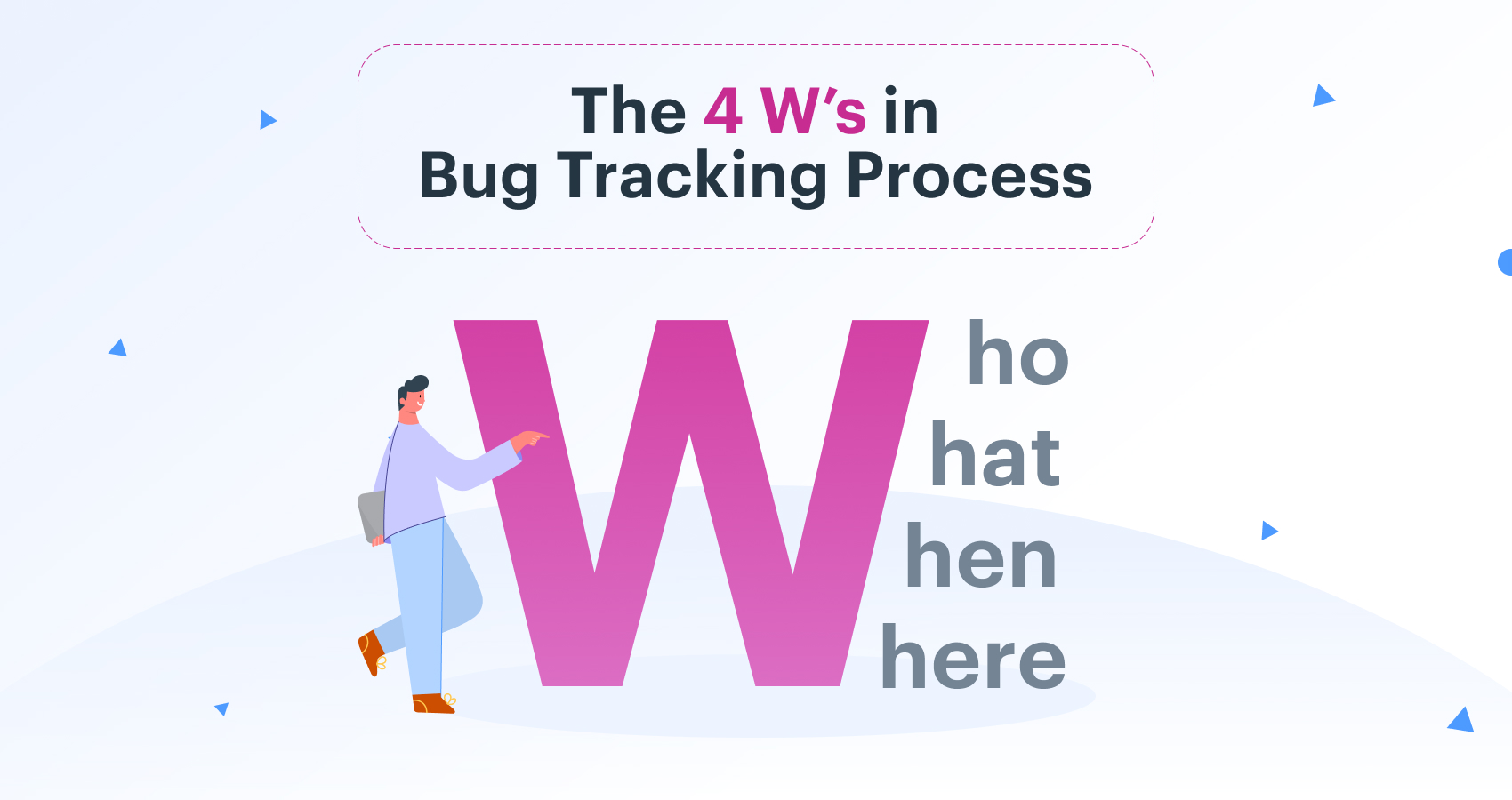Bug tracking is all about asking the right questions with the aim of arriving at an appropriate resolution. A bug report must contain all the information needed to track bugs effectively and resolve them in as little time as possible. It is akin to an investigation, in which the details of the questions you ask will determine the outcome of a case. Product bugs can be complex and challenging to resolve if you don’t have as much information as possible.
Like any other investigative process, emerging information and discoveries will also change the outcome of the case. Every new piece of information may change the course of the bug ticket and how it will be resolved. Solving one bug may also create new ones, which is why the process of collecting information for bug tracking must be as detailed as possible. When writing bug reports, the right quality and quantity of information are required to resolve bugs effectively.
The answers to the 4Ws of bug tracking in your bug reports are crucial to your bug management strategy.
The 4 Ws of Bug Tracking Process
The bug reporting process is the foundation; Think of it as an incident report. It is essential that the pieces of information requested in the bug report are as helpful as possible.

The following are the 4Ws of bug tracking process.
Who
Bugs don’t just show up on their own. They are discovered by someone during tests or by users during product interactions or beta testing. Bug reporting is probably easier when it is discovered by a member of your product testing team since there’s a need for a clear line of communication between the person that found the bug and the person that resolves it. However, externally reported bugs are important as well, and great efforts must be invested into collecting as much information about the report as possible to aid the easier resolution.
What
What exactly is this bug that is being reported? This is arguably the most critical question to answer in trying to report a bug. How big of an issue is it? Bugs can be minor, and they could be big enough to cripple the performance of your applications. The criticality of the bug is crucial to categorizing and prioritizing it. Bugs that affect the core operations of software need to be prioritized and resolved first.
Product developers and testers need to determine what action resulted in the discovery of the bug. The case handler then has to reverse engineer the problem to its source and determine the right course of action. Testers will also have to re-test and conduct thorough investigations to ensure that the bug has indeed been solved.
When
The question of time in bug resolution can be a bit tricky, considering it can be pretty difficult to pinpoint the exact time an issue occurred for the first time. In most cases, all that can be done is to state the precise time that it was detected or reported. The time frame is quite important for developers in helping them track down issues. For instance, if a major change was made to the bug code around the time of the report or a new feature was just added to the app, it might be possible that the code change or app update was responsible for the glitch. Tying issues to a time frame will make it a lot easier to identify issues and troubleshoot them as swiftly as possible.
The time frame of bug resolution is also essential. Answering how long it takes to resolve a bug will be very important in tracking the bug trend and understanding future iterations of the problem. Knowing how long it takes to fix a bug is also crucial for assessing the effectiveness of your product team and their compliance with the service level agreement (SLA) with the users.
Where
Without knowing the exact location where the bug was found, the description of the problem might not do much to help the investigator. Answering the location of the bug is crucial to knowing the full extent of the problem and figuring out how to resolve it. Bugs can be within a specific feature in your app or product-wide. This is why it is essential to provide information about what was affected and what triggers the malfunction.
Bonus: How
Finally, there’s a need to answer questions regarding how the issue tracking process will be coordinated. From the perspective of the development team working to resolve issues, there’s a need to determine the course of action that will be taken to investigate the bug further and track it. How will the task be delegated, and how will it be resolved to ensure the SLA is met?
Bug Tracking with Kissflow
While there are several additional questions to answer in the product bug tracking process, these are the most important ones to start with. A bug tracking software like Kissflow Workflow makes it easy to answer these questions and collect as much information about any bug discovered in your product.
Kissflow Workflow is a comprehensive bug tracking solution that simplifies issue tracking workflows quite significantly. It has the internet’s most powerful form builder that comes with several advanced fields and filters that captures the right information at various stages of the workflow and helps in better decision-making and faster resolution. Kissflow’s bug tracking solution is perfect for growing businesses looking for a great mix of features and flexibility at an affordable price point.
What are you waiting for? Try Kissflow Workflow today!